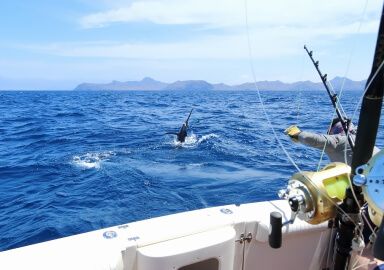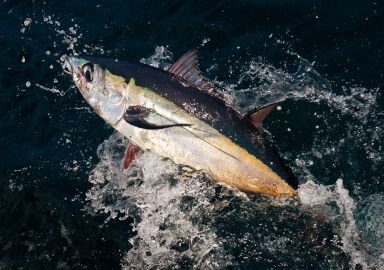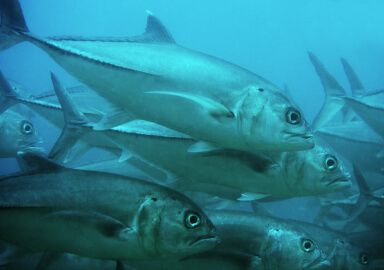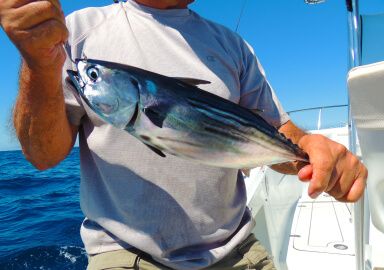Longtail Tuna
Shy but hard-fighting, longtail tuna is a rare but prized catch for recreational anglers in Australia and elsewhere in the Indian and Pacific Oceans.
View 14 listings
14
listings
–
price starting from
3
countries
–
to the nearest trip
Where and When?
Longtail tuna are found in many tropical and sub-tropical areas of the Indian and Pacific Oceans. Their range spreads from the Red Sea, around India and Southeastern Asia to Japan, and southwards to South Africa, Australia and even New Zealand.
Although there are no large-scale migrations, in some areas such as the east and west coasts of Australia, there is a general summer southward movement, returning in autumn. If they are around, they will feed throughout the year, so the best time for a longtail tuna fishing trip depends mostly on local weather and sea conditions.
About Longtail Tuna
Longtail tuna (Thunnus tonggol) are an important commercial and recreational fish species. They have the typical torpedo-shaped body of tunas, but are slightly more elongated than most related species, particularly the bluefin tunas. The second dorsal fin is higher than the first and the pectoral fins are particularly long.
In colour they display the usual countershading, being almost black on the upper side and silvery white below. They have medium-sized eyes and mouths and, as with all tunas, they are built for speed. They are not the largest tunas but can attain 1.45 m. (57 in.) in length with a maximum recorded mass of 35.9 kg. (79 lbs.).
They are a relatively slow-growing tuna but live longer than many of their cousins. Longtail tuna mature at 60-70 cm. (23-27 in.) and can live at least 19 years. They feed mostly on fast swimming fish, but also take quantities of invertebrates such as squid and crustaceans. Longtail tuna form shoals of mixed-sized individuals and spawn multiple times between September to March. In each spawning event a female longtail tuna can produce between one and two million eggs.
Although a coastal species, the longtail tuna shun turbid waters, such as near estuaries, preferring clear open-water areas somewhat offshore. They do not associate strongly with reefs or similar structures but can come close inshore if there is deep, clear water around rocky points or cliffs. In open water they rarely rise to within 10 metres of the surface but are mostly located within the top 50 metres.
How to Catch?
Most longtail tuna are caught by small-scale commercial fishing operations, using gillnets, purse seines or trolling, in the northern and eastern areas of its distribution. Targeted recreational fishing is less common except around the northern areas of Australia. This country has declared the longtail tuna a “recreational-only” species and instituted size and bag limits. This has resulted in a robust fishery and an improvement in stocks.
Most longtail tuna recreational fishing around Australia is carried out from small charter boats around the coastline. These fish are mostly daylight feeders with a tendency to bite better early or late in the day. Spinning with various artificial lures is most commonly used, although fishing with live bait can also be successful.
Longtail tuna have a reputation of being shy and reluctant to take the bait, and so it is often necessary to cast far from the boat, retrieving rapidly and erratically for best results. Once hooked, a good-sized longtail tuna will test your rod, reel and line to their limits. Excellent quality spinning rods and reels are essential as a longtail tuna will fight strongly.
As with many species, local knowledge and expertise is important to get you to the fish quickly and operators will usually supply the most suitable equipment. Longtail tuna will undoubtedly give a memorable fight and adding this species to your bucket list is an excellent idea.














